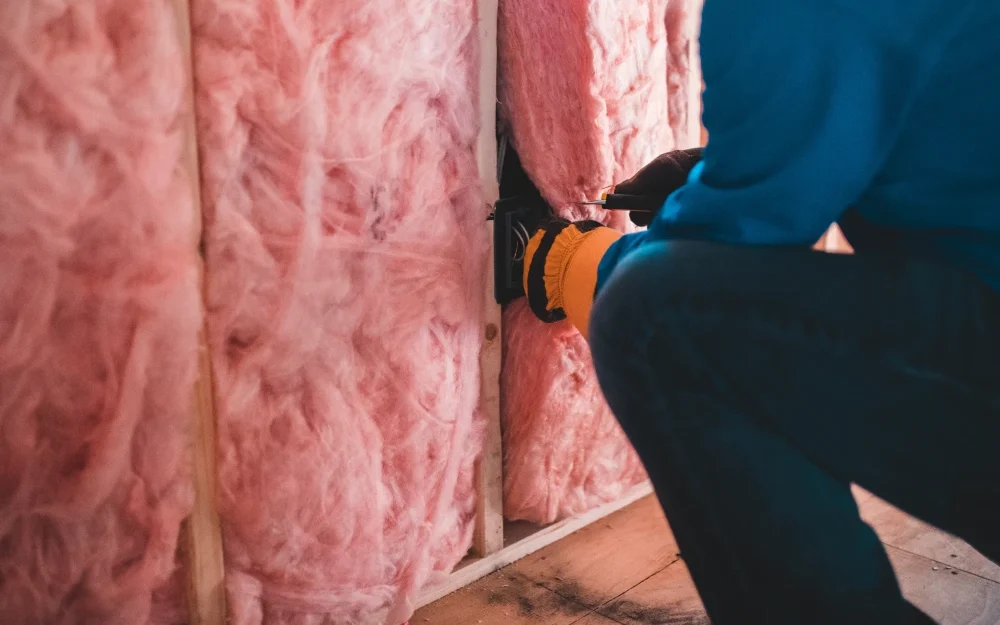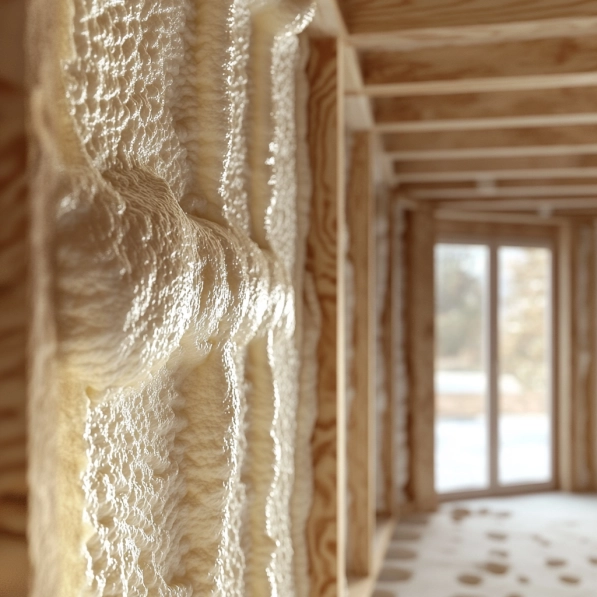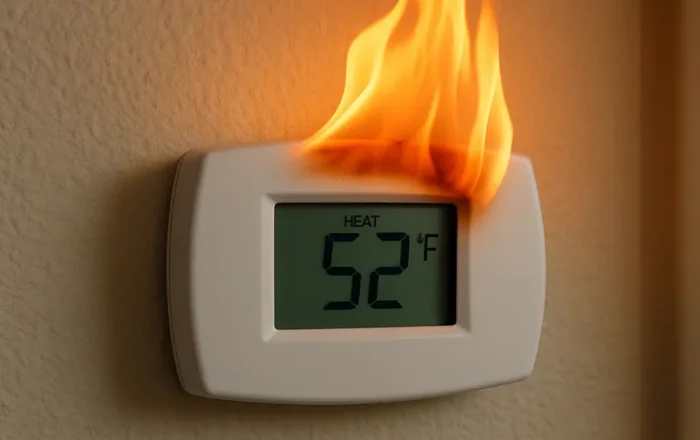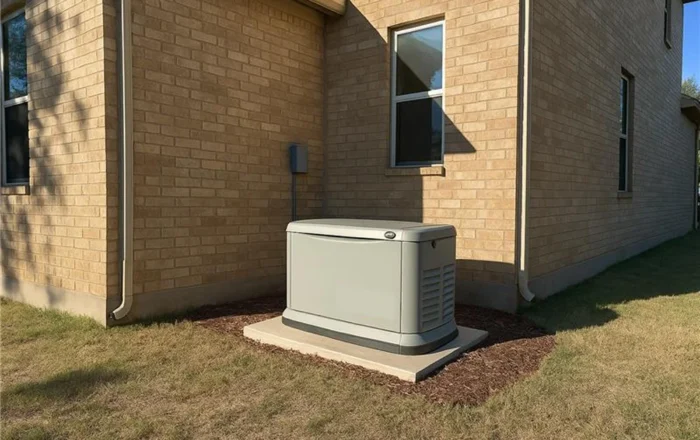Is My Thermostat Broken?
5 minute readHow to diagnose a faulty thermostat, fix common issues, and know when it’s time for a replacement.
Home > Blog > Types of Insulation: Which Are the Most Energy Efficient?
5 minute read • Last update August 2024

Interested in long-term energy savings at home? Upgrading your insulation can help. Choosing the best type of insulation is crucial for maximizing energy savings while maintaining a comfortable home environment. In this guide, we’ll explore different types of insulation material so you can make an informed decision about what’s best for your property.
Choosing the most energy-efficient insulation can reduce your overall energy expenses by up to 15%. But the benefits don’t stop there. By reducing heat flow, the best insulation material also improves indoor air quality by preventing drafts and reducing the infiltration of outdoor pollutants, making your living environment healthier.
What is the best insulation for homeowners looking to cut their electric bill costs and their environmental footprint? This comprehensive list of insulation ranks the different options from most to least energy-efficient.
Liquid foam is a versatile and highly effective insulating material, typically applied using a spray gun. What makes sprayed foam the best home insulation? The answer lies in how it rapidly expands and hardens upon application, filling gaps and creating an effective air barrier even in hard-to-reach areas and irregularly shaped spaces. Spray sealing foam comes in two types:
So, while you might use open-cell spray foam for some household applications, it’s not the best vapor barrier and therefore is not ideal for internal application. Here’s a quick list of the primary pros and cons of using closed-sprayed foam insulation:

Rigid foam board insulation consists of solid panels with a foam core that can be used to insulate almost any part of your home, from the roof down to the foundation. Foam boards are commonly described using their synthetic names: polyisocyanurate, polyurethane foam, and polystyrene foam board. Whatever name you use, these structural insulated panels (SIPS) are particularly effective at reducing heat conduction through structural elements like steel studs.
Reflective insulation works by deflecting heat away from your home. Reflective and radiant barriers typically consist of foil-faced Kraft paper, plastic film, or polyethylene bubbles, which are particularly effective at resisting heat flow in hot climates where prolonged exposure to sunlight can cause homes to overheat.
Mineral wool is similar to fiberglass insulation. It is made by spinning recycled and natural fibers at high temperatures to form a material that resembles sheep’s wool. The raw materials that can be used to make it include ceramics, rock wool, slag wool, and molten metal like blast furnace slag left over from industrial processes. Mineral wool insulation can be found in both batts and loose-fill forms and works particularly well for insulating autoclaved aerated concrete.
Cellulose is an eco-friendly type of loose-fill insulation made from recycled paper products and is often treated with borate to enhance its fire resistance and pest-repelling properties. A type of “blown-in insulation,” it can be inserted into either new or existing walls as it easily conforms to spaces around obstructions.
Batts are one of the most commonly used types of insulation. Typically made from fiberglass, sheep’s wool, or mineral wool, batts come in pre-cut panels and are usually bought as a blanket or roll. Installation is straightforward as they’re sized to fit into standard cavities and are widely available in various thicknesses.
Fiberglass is the result of combining glass and plastic fibers and flattening them into a sheet or weaving them to make a glass cloth. Fiberglass insulation is available in many forms including batts, rolls, and loose-fill, which makes it highly adaptable.
There’s no one-size-fits-all solution that’s the best insulation for homes in all circumstances. Rather, you may need to use various insulating materials in different areas of your home. You’ll also need to carefully consider R-value, climate, and your budget for installing insulation. Let’s dive into each of those factors in a little more detail.
R-value insulation ratings measure how well different insulation types resist heat flow. The higher the R-value, the better the material insulates. Higher R-values are especially beneficial for attics and unfinished walls to ensure maximum thermal resistance. Before buying any thermal insulation materials, you should consult your local building codes for recommended R-values in your area.
Reflective insulation is beneficial in hot climates as it helps keep the heat out, whereas cold climates require higher R-value materials to retain heat. In regions with extreme temperature variations – like the panhandle region, for example – combining different types of insulation may offer more comprehensive protection against both heat and cold.
Different areas of your home require specific thermal insulation solutions. For example, if you’re debating between spray foam insulation vs fiberglass loose-fill insulation in an area that requires both thermal resistance and moisture control, spray foam would be the better option. Here’s a quick reference summary of what works best where:
You’ll need to weigh the upfront investment against savings over time if you’re to select the best insulation material to reduce your cooling costs. For example, if you’re debating between installing foam board insulation or spray foam insulation vs batt insulation, you’ll likely get wildly different quotes for purchase and fitting. However, while options like insulation boards and spray foam have higher initial costs, they typically offer more substantial long-term energy savings over time.
Understanding how different types of insulation can reduce your cooling costs is a great way to make savings on your energy bill. But it’s not the only solution.
Did you know that switching your electricity plan could save you hundreds of dollars annually?
At BKVE, we specialize in providing Texans with simple, affordable electricity plans with no complex marketing jargon, usage fees, or base charges. So, why wait? Enter your zip code to get started today.
Graham Lumley, Digital Marketing Manager at BKV Energy, leads digital and traditional marketing strategies, focusing on educating Texans about the state's deregulated energy market. With over 8 years of marketing experience, he creates content to help consumers understand and save on their energy bills, bringing a fresh and dynamic approach to the industry.

How to diagnose a faulty thermostat, fix common issues, and know when it’s time for a replacement.

How to choose the right generator for your Texas home
Get $50 off your electric bill!
Use code BKVEJOINUS50
Enter your zip code to shop BKV Energy's affordable, fixed-rate Texas electricity plans. Use the promo code for $50 off your electric bill.